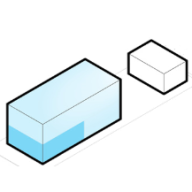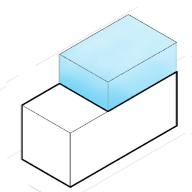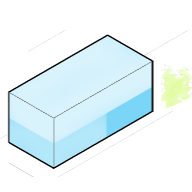Development Opportunity for
65 Western Shore Ln, San Francisco, CA
339% Potential
($357,745,209 Untapped Value)
This is a Multi-Family Residential property (Duplex, Triplex or Fourplex) with 113 units on a lot of 112,718 sqft. It has a total of 3 levels, 5 rooms, 3 bedrooms, 2 bathrooms. Property has a total as-built area of 124,559 sqft of which 102,490 sqft is the conditioned area assessed for property taxes.
Development Options for
65 Western Shore Ln, San Francisco, CA
What are the local zoning regulations for 65 Western Shore Ln ?
RM-3 (RESIDENTIAL- MIXED, MEDIUM DENSITY)
San Francisco municipal code permits up to three units per lot or 1 Unit/400 square feet of lot area.
These Districts have some smaller structures, but are predominantly devoted to apartment buildings of six, eight, 10 or more units. Most of these districts are close to downtown and have been developed in this manner for some time. The units vary in size, but tend to be smaller than in Low Density and Moderate Density districts.
Permitted Residential Uses: ADU, intermediate length occupancy use, single room occupancy, dwelling units, student housing, senior housing, group housing and homeless shelter.
Permitted Non-Residential Uses: Agriculture, passive outdoor recreation, child care facility, public facilities, and residential care facility.
What is the maximum height for 65 Western Shore Ln ?
50-X
Height of a dwelling cannot exceed a 50 feet.
In order to encourage generous ground floor ceiling heights for commercial and other active uses, encourage additional light and air into ground floor spaces, allow for walk-up ground floor residential uses to be raised slightly from sidewalk level for privacy and usability of front stoops, and create better building frontage on the public street, up to an additional 5' of height is allowed along major streets in NCT and specific areas in NC-1, NC-2 and NC-3 districts, for buildings that feature either higher ground floor ceilings for non-residential uses or ground floor residential units (that have direct walk-up access from the sidewalk) raised up from sidewalk level.
How to measure height in San Francisco?
A point shall be taken at the centerline of the building or, where the building steps laterally in relation to a street that is the basis for height measurement, separate points shall be taken at the centerline of each building step. The upper point to which such measurement shall be taken shall be the highest point on the finished roof in the case of a flat roof, and the average height of the rise in the case of a pitched or stepped roof.
What are the ADU regulations for 65 Western Shore Ln ?
ADU eligible
Accessory Dwelling Units (ADUs), also called secondary units, in-law units, or cottages, are units added to existing and new residential buildings. Adding an ADU to your property can provide several benefits, such as providing housing for family members, simplifying your lifestyle, and increased financial flexibility.Learn more about building ADU in this article
What neighborhood is 65 Western Shore Ln located in?
Western Addition, San Francisco
Western Addition neighborhood has the only other Japantown in Northern California (the other being in San Jose). Plus, the super famous Fillmore Theatre is right here and we have our own farmer’s market every Saturday, with a live jazz band to accompany it!
The Western Addition, like many neighborhoods, is ill-defined. Some maps draw it as encompassing all of Alamo Square Park and a significant portion of what is now known as "NoPa," while others define it as the area north of Golden Gate, extending to Geary.
Western Addition intersects and/or overlaps with the Alamo Square neighborhood, NoPa, the Fillmore District, Lower Pacific Heights and the Lower Haight, depending on how you mentally define it.
Based on how many in the hood talk about the Western Addition, its borders appear to have shrunk over the past several years to encompass an area containing a number of lower-income housing units. At the same time, new neighborhood names such as NoPa have appeared, and the Alamo Square neighborhood began to mentally capture more and more of the common vernacular. This is no doubt due to the efforts of real estate agents.




